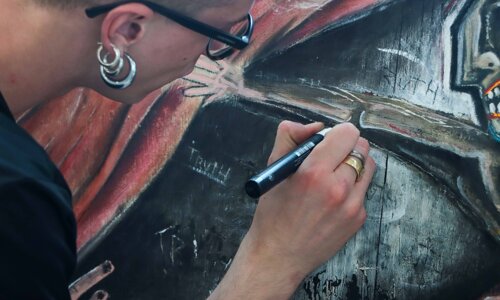Painting
Artist, painter, illustrator, digital artist
Characteristics of the course of study
Technique and Individual Exploration. The Painting Course offers students the opportunity to undertake a comprehensive and effective study path that helps them learn and deepen their understanding of various painting techniques while also supporting them in discovering their own unique artistic style. The adopted methodology allows students to acquire the theoretical and expressive elements necessary to navigate the field of painting with awareness, through the study of drawing, painting techniques, illustration and engraving languages, and photography. The curriculum emphasizes practical training.
A gradual journey, expertly balanced between historical-artistic disciplines and practical laboratory activities, guides students through to the third year, during which they will also be introduced to digital languages and the functioning mechanisms of the Art System.
Share
Coordinators
Coordinator: Vera Canevazzi
Tutor: Marco La Rosa
Professors
Course Goals
The Painting Course aims to provide artistic skills and knowledge essential for mastering the expressive tools at the core of traditional painting (such as drawing, oil, watercolor, acrylic, etc.). It takes into account the plurality of languages and innovations in visual art techniques, equipping students with the ability to develop and nurture their own individual research perspective. Through cultural activities promoted by SantaGiulia Academy in art galleries, museums, and both private and public spaces, students will have the opportunity to test their professionalism by immediately engaging with the art world and the dynamics of the art system.
Job perspectives
Artist, painter, illustrator, digital artist
The professional profile of a graduate from the Painting Course is that of an artist proficient in the techniques of pictorial expression and knowledgeable about the dynamics of the contemporary art system and market. The graduate will have acquired foundational skills that can be applied professionally to manage public and private commissions, engage with gallery owners, and collaborate on projects and with artistic groups.
